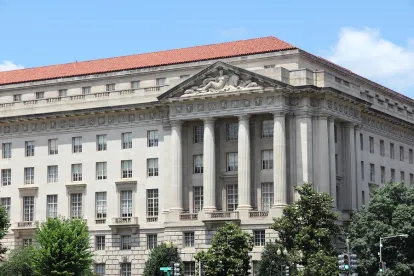This is the fourth in a series of articles Jones Walker LLP is providing that will explore the impact of the 2020 Election on Environmental Law.
There are clear differences between the environmental priorities of President Trump and former Vice-President Biden. President Trump’s priorities have included promotion of domestic energy including oil and gas and streamlining of permitting and approvals for industrial projects. Biden has said he will transition away from and end subsidies on fossil fuels, strengthen regulation of the oil and gas industry, including imposing aggressive methane pollution limits, increase investment in clean energy, and recommit the US to the Paris Agreement on climate change. But if elected, how easily and quickly could Biden implement regulatory changes?
Policies, guidance documents and Executive Orders largely could be changed at will by executive branch agencies and departments under Biden. Changes in environmental regulations, however, typically involve a lengthy process. Rulemakings require public notice of the proposed regulations and a comment period of 30 to 90 days before final regulations can be issued. Significant rules can take two to three years to complete and may be followed by litigation challenging the final rules.
Possible Targets of a Biden Administration
Several environmental regulations issued under Trump appear to conflict with Biden’s priorities and may be targeted for change if Biden is elected. The following are a few examples:
-
The Project Emissions Accounting Rule. On October 22, 2020, EPA issued a prepublication version of a final rule revising the test for determining whether a proposed project at an existing major source facility will constitute a major modification subject to the major New Source Review (NSR) preconstruction permitting requirements.[1] The rule clarifies that emissions increases and decreases resulting from the project may both be accounted for in Step 1 of the NSR major modification applicability test. Previously, only emissions increases from the project were accounted for in Step 1 of the test and emissions decreases could not be considered until Step 2. Proponents of the rule say it will save major source facilities the time and money of going through both steps of the analysis when it would ultimately be shown that the project will not result in a significant net increase in emissions and therefore will not require a major NSR preconstruction permit. The rule will become effective 30 days after its publication in the Federal Register.
-
Rescission of the “Once In, Always In” Policy. On October 1, 2020, EPA issued a pre-publication version of a final rule that rescinds the “once in, always in” policy.[2] That policy, announced in a 1995 memorandum, provided that any facility that was a “major source” of hazardous air pollutants (HAPs) on the first substantive compliance date of an applicable maximum achievable control technology (MACT) standard under the Clean Air Act (CAA) must “permanently” comply with that standard. That meant that the facility could not reclassify as an area (minor) source even if it subsequently reduced its emissions and accepted enforceable limits on its potential to emit HAPs below the major source thresholds. As a result of the regulatory rescission of the policy, such reclassification will be allowed. The final rule will become effective 60 days after its publication in the Federal Register.
-
The “Review Rule” and “Reconsideration Rule” regarding Methane Emissions from Oil and Gas Operations. On August 13, 2020, EPA released what are referred to as the “Review Rule”[3] and the “Reconsideration Rule”[4], which roll back much of the Obama-era regulations of methane emissions from oil and gas operations. The “Review Rule” was published and became effective on September 14, 2020. The “Reconsideration Rule” becomes effective on November 16, 2020. Lawsuits challenging both rules are pending in the US Court of Appeals for the District of Columbia Circuit.
-
Revision of the NEPA Implementing Regulations. On July 16, 2020, the Council on Environmental Quality (CEQ) issued a final rule revising the procedures for implementing the National Environmental Quality Act (NEPA).[5] CEQ states that the revisions are intended to streamline the NEPA process and make it more predictable. Among other things, the rule removes language referring to “indirect” and “cumulative” effects of a project; instead, the focus is on whether the environmental consequences are causally related and reasonably foreseeable. It also limits the length of and the time for preparation of environmental assessments and environmental impact statements. The rule became effective on September 14, 2020. Several federal lawsuits have been filed challenging the rule, however efforts to stay the rule thus far have been unsuccessful.
-
The Water Quality Certification Rule. On June 1, 2020, EPA finalized the Water Quality Certification Rule.[6] The rule restricts the ability of states and tribes to deny water quality certifications for reasons other than water quality concerns and clarifies and limits the time within which states and tribes must make decisions on a water quality certification applications. The rule was issued to address perceived efforts by certain state agencies to use the water quality certification process to delay or block significant energy infrastructure projects. It went into effect on September 11, 2020. Lawsuits challenging the rule are pending in various federal courts.
-
The Navigable Waters Protection Rule. On April 21, 2020, the US Army Corps of Engineers and EPA published the Navigable Waters Protection Rule (NWP Rule).[7] The rule defines “waters of the United States” to mean territorial seas, traditionally navigable water bodies, tributaries, lakes and ponds, impoundments of jurisdictional waters, and their adjacent wetlands. It applies the CWA more narrowly than the now-repealed 2015 Obama-era “Waters of the United States” rule. The NWP Rule became effective on June 22, 2020. Multiple states have sought to enjoin or to stay the rule, but to date only Colorado has been successful. As a result, the NWP Rule is now in effect in all states except in Colorado.
-
The Affordable Clean Energy Rule. On June 19, 2019, the EPA issued the final Affordable Clean Energy (ACE) rule, which establishes emission guidelines for states to use in their development of unit-specific standards of performance that address greenhouse gas (GHG) emissions at existing coal-fired power plants.[8] The ACE rule was finalized in conjunction with two related but independent rulemaking actions that repealed the Obama-era Clean Power Plan and revised the implementing regulations for ACE and future emission guidelines for existing sources. It became effective on September 6, 2019. The rule is the subject of pending litigation in the US Court of Appeals for the District of Columbia Circuit.
A Biden administration could also take positions in pending litigation to undermine Trump-era regulations. For example, the Biden executive branch could choose not to defend the regulation at issue or ask the court to delay the proceedings while it reconsiders its position.
Potential Impact of the Congressional Review Act
The Congressional Review Act (CRA)[9] requires federal agencies to submit a copy of each final rule to both chambers of Congress. If within roughly 60 calendar days following submittal Congress introduces a “joint resolution of disapproval” of the rule, which is then approved by a simple majority of the Senate and House (with filibuster being precluded) and signed by the President, the rule is invalidated. And if a rule is invalidated, a new rule “in substantially the same form” cannot be issued unless specifically authorized by a subsequent law enacted by Congress.
A primary purpose of the CRA, however, is to allow a new administration time to essentially undo actions taken in the waning days of the prior administration. Toward that end, the CRA provides if a rule is submitted to Congress when there are less than 60 “session days” remaining in the Senate or less than 60 “legislative days” remaining in the House before they adjourn for the calendar year, members of the new Congress are allowed roughly another 60 days, beginning on the fifteenth session or legislative day of the new Congress, to introduce a “joint resolution of disapproval” of the rule. This “lookback period” for 2020 is estimated to have commenced around the beginning of June 2020.
Notably, the term “rule” as used in the CRA arguably is not limited to regulations but also includes agency guidance documents.[10] As a result, guidance documents may also be subject to invalidation under the CRA. Moreover, agencies have not always submitted guidance documents to Congress pursuant to the CRA, and such guidance documents may be subject to invalidation even if issued prior to the commencement of the 2020 CRA “lookback period.”
This means that if Joe Biden is President and the Democrats hold a majority in the Senate and House after the 2020 election, they would have several months into 2021 to invalidate environmental regulations and guidance issued under the Trump administration during the last seven months or so of 2020 (and perhaps earlier with respect to guidance documents not submitted to Congress).[11] In 2017, President Trump and the Republican Congress used the CRA to invalidate more than a dozen so-called “midnight rules” related to the environment issued under the Obama administration. Given the opportunity, the Democrats may return the favor in 2021.
The next article in this series will look at possible Senate and House outcomes and their effects on key energy industry committees. Join us after the election, on November 11, 2020 for a roundtable discussion of the election results and the potential impact on environmental law.
[1] See https://www.epa.gov/sites/production/files/2020-10/documents/frl-10016-21-oar_10-21-20_admin.pdf.
[2] See https://www.epa.gov/sites/production/files/2020-10/documents/frn_mm2a_2060-am75_final_rule.pdf.
[3] 85 FR 57018.
[4] 85 FR 57398.
[5] 85 FR 43304.
[6] 84 FR 42210.
[7] 85 FR 22250.
[8] 84 FR 32520.
[9] 5 U.S.C. §§ 801-808.
[10] See 5 U.S.C. §§ 551(4) and 804(3).
[11] A Biden administration could withdraw or modify agency guidance irrespective of the CRA. Invalidation of an agency guidance under the CRA, however, would arguably prevent the agency from thereafter issuing guidance “in substantially the same form” unless specifically authorized by Congress to do so.





 />i
/>i

